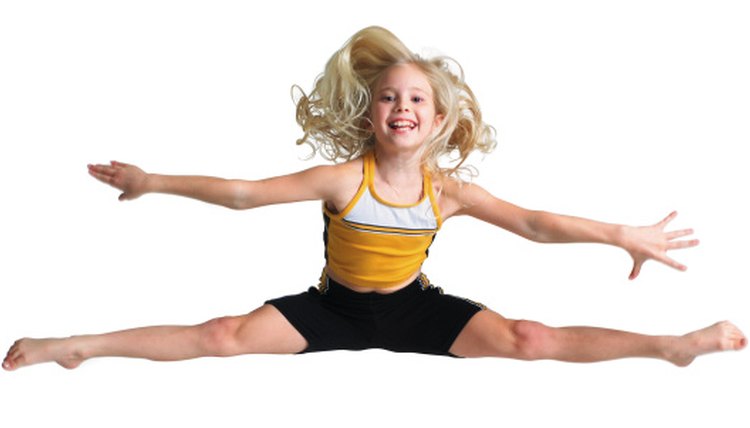Types of Jumps in Gymnastics

On the floor and the beam, gymnastics jumps are about height, flexibility, extension, form and speed. While the floor and the beam have some spring action, most of the height actually comes from the gymnast’s power. The list of jumps landed in competition continues to grow as the difficulty and creativity of the sport increase, but all jumps begin from the same skill types.
Hops, Leaps and Jumps
Although hops, leaps and jumps might sound like the same thing, they are not. The difference lies in the footing. In a hop, you take off from one foot and land on that same foot, the same way you do as a young child in hopscotch. In a leap, you also take off from one foot but land on the opposite foot. Covering the most distance, leaps are a common way to travel the balance beam. When you jump, both feet leave the ground at the same time, as in jumping on a trampoline.
Pike and Tuck
Learned on the floor as fundamental positions, the pike and tuck are the most basic of jumps. The tuck jump is simply a tuck of the knees under the chest in the air. The tuck jump develops into a front tuck, otherwise known as a front flip. In the pike jump, you bring the legs straight out, so your body forms a right angle in the air. The wolf kick uses elements of the pike jump, but instead of piking both legs, one leg bends back, so the thigh touches the calf.
Straddle and Split
The straddle jump, split leap and split jump are similar to the splits on the floor but require more training to master the 180-degree separation in the air. In the straddle jump, you extend one straight leg to your left and one straight leg to your right. The straddle jump develops into a Shushunova, in which you jump in the straddle and then rotate the body forward so you are parallel with the beam.
In the split jump, you split the legs as in a front leg split. The split leap is the same, except in the leap position. The split leap develops into a switch leap, in which you start with one leg in front and quickly switch so that the other leg is front in the air.
Tips
Jumps, leaps and hops are not just about the feet and legs. The arms must move with the jump to propel the jump higher or the leap farther. Your arms should rise over your head as you jump and come down halfway in front of you or to your sides as you complete the jump, depending on the skill. Always land with your knees slightly bent.
Practice jumps and leaps in repetition down the floor exercise or a trampoline track. To reach the 180-degree or higher separation on straddle and split jumps, practice sitting in the splits and, under the guidance of your coach, practice ballistic kicking repetitions.
Writer Bio
Ivy Morris specializes in health, fitness, beauty, fashion and music. Her work has appeared in "Sacramento News and Review," "Prosper Magazine" and "Sacramento Parent Magazine," among other publications. Morris also writes for medical offices and legal practices. She holds a Bachelor of Arts in government-journalism from Sacramento State University.
